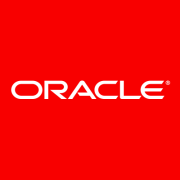Publishing Software enables individuals and organizations to create, edit, and distribute digital content efficiently across multiple platforms. It supports diverse formats, streamlining the publishing process from inception to distribution.
To learn more, read our
Adobe Captivate vs. FrameMaker Buyer's Guide (Updated: September 2025).
The top 5 Publishing Software solutions are FrameMaker, Adobe Captivate, PTC Arbortext, QuarkXPress and Olive Software, as ranked by PeerSpot users in September 2025. Adobe Captivate received the highest rating of 8.0 among the leaders and is the most popular solution in terms of searches by peers, and FrameMaker holds the largest mind share of 25.0%.
This software provides tools for content creation, collaboration, and distribution, making it highly useful for businesses looking to maintain a consistent and professional digital presence. Different solutions offer various functionalities catering to specific needs, such as print, web, and digital publishing.
What are the key features of this category?
- Content Management: Organizes and manages digital assets for efficient retrieval and use.
- Collaboration Tools: Enables multiple users to work on content simultaneously.
- Multi-Channel Distribution: Publishes content across various platforms including web, print, and mobile.
- Analytics and Reporting: Provides insights into content performance and audience interaction.
- Customizable Templates: Offers pre-designed templates for quick and easy content creation.
What benefits should users look for?
- Efficiency: Streamlines content creation and distribution processes.
- Consistency: Maintains brand voice and style across all published materials.
- Scalability: Adapts to growing content needs without requiring significant changes or upgrades.
- Cost-Effectiveness: Reduces the need for multiple software solutions, thereby lowering expenses.
- Data-Driven Decisions: Uses analytics to refine and improve content strategy.
Publishing Software is widely utilized in industries such as media, education, and marketing. In media, it helps streamline the process of creating and distributing news content. Educational institutions use it to manage and publish academic materials, while marketing firms leverage it for brand management and digital campaigns.
This category helps organizations manage their digital content efficiently, ensuring timely delivery and consistency across multiple channels.









